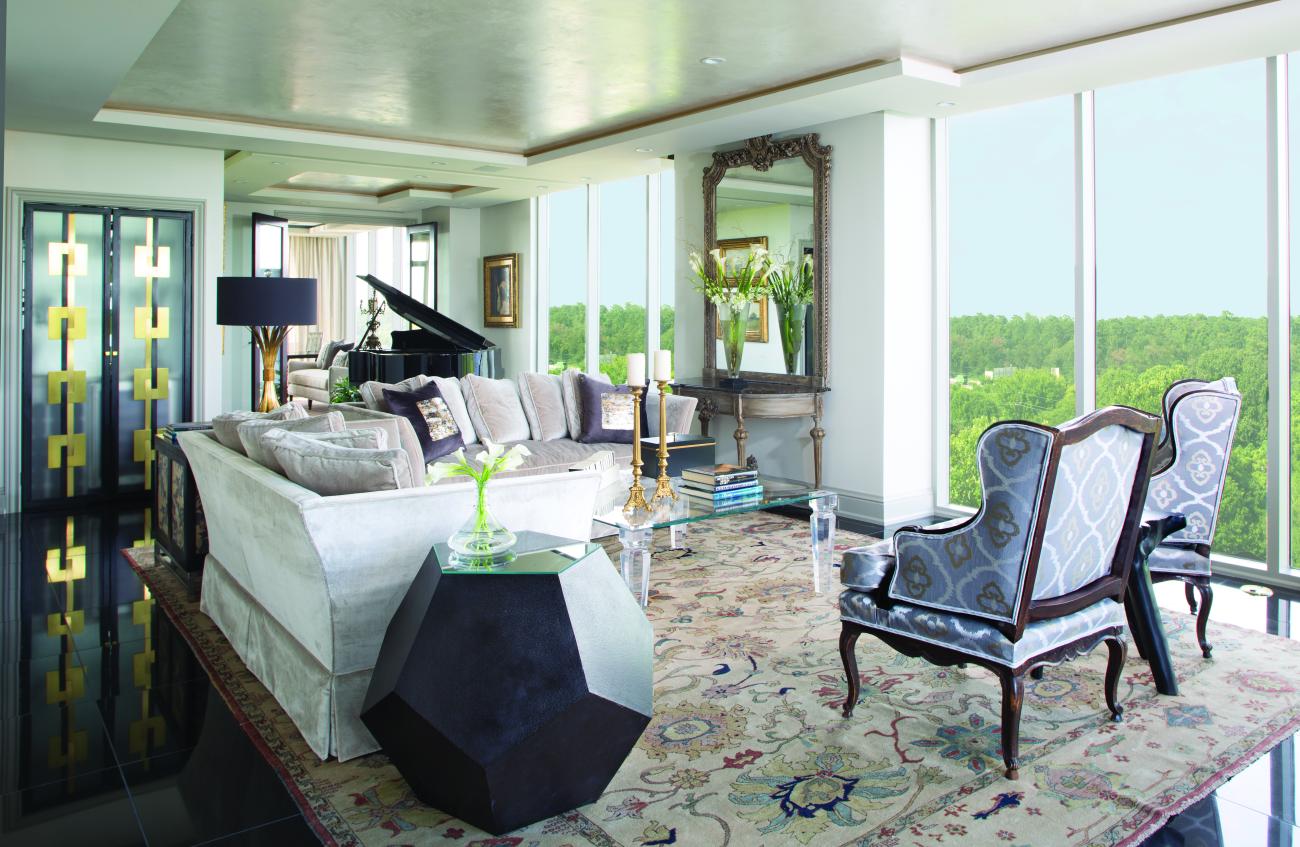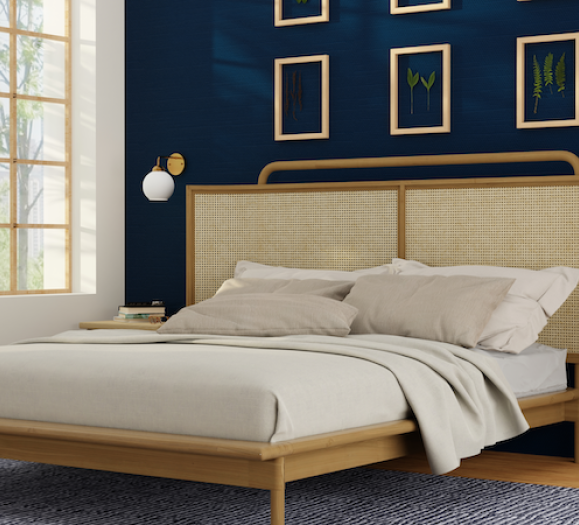Design House, in Houston, TX, may be the first interior design retail showroom that qualified as a finalist for the Showroom of the Year Awards, which focuses attention on lighting retail showrooms. Design House is not your typical interior design showroom, however, as Owner Connie LeFevre has developed the ambitious trajectory of having an interior design business, a retail design showroom — complete with an exceptional lighting assortment — and a retail fabric center where designers and consumers alike can peruse her expertly curated selection of home furnishings textiles.
In her established design business, LeFevre has never been afraid to push the envelope just a little bit more as she recognizes an increased need for the services and selection she offers.
In the Beginning
When she first went to school, LeFevre’s major was business. The intent was to study something practical, she says. Then she met her future husband, got married and moved to Houston. After she had children, she decided to go back to school, but for the subjects that really interested her. “I took everything I could find related to the arts,” LeFevre says. “That included interiors, graphics and more. I was so hungry for it and I didn’t mind doing everything.”
Her focus on the arts was just the beginning of her interior design journey. Her first project as an interior designer was an office in Philadelphia. On that project, LeFevre realized she still had some things to learn, as she suddenly found herself dealing with labor union workers, who had a different way of doing things. “I had been so careful to dot my i’s and cross my t’s and had everything mapped out. And then I’m told if I touch anything, these workers would walk and nothing would get done,” she says. That experience, however, set LeFevre up for a career where she ensures she is open to new ideas, technologies, working styles and the opportunities that come with knowing she needs to pay attention to what’s happening in the community and in the business.
Creating An Environment
LeFevre shares that while designers need to constantly be learning, they also need to understand what they do goes beyond beautifying spaces. The Houston designer’s aesthetic combines luxury and functionality, with an emphasis on quality — in her design projects with clients and her retail showrooms — Design House and Fabric House.
When she went into design and through to today, her mission has been to help people create environments. It’s important, she adds, to incorporate more than your job title in your elevator pitch. “When you’re a licensed designer, you need to convey that you are focused on the health, safety and welfare of your client,” LeFevre notes. “I had to get right with that to pursue it.”
And pursue it, she has. Feedback from her design clients and those who shop her showrooms have validated that she’s gone in the right direction.
As she was building her successful design business, for example, she knew she needed space. At first, she and several other designers bought a property they would share while they practiced independently. “We each had our own offices upstairs; downstairs we had window coverings, sofas where customers could sit, a conference room and dining room. The den was where we kept our fabrics and other samples,” she says.
After they outgrew that space and decided to sell that property, LeFevre knew she still needed a location where she could store the unique products she was sourcing. “I had a warehouse but I needed somewhere where people could find me easily,” she says. At the time, she had designers coming to the warehouse to see what she had there, and she knew opening a showroom would make that process much easier.
In 2002, LeFevre opened her first showroom in the Houston Design Center. She has since expanded that first showroom twice while having a section to house the extensive fabrics and wall covering selection she kept for her design clients and the designers who shopped her showroom. She eventually realized she needed an additional showroom to house those latter categories, and she opened a second showroom dedicated to textiles and wall coverings. She’s since expanded that space twice and is currently in the process of expanding that showroom again by 5,000 square feet. While the large fabric vendors have their own showrooms as well, LeFevre’s advantage is her vast selection, all in one place. “People want to come to us and let us order from the different fabric vendors,” she notes.
The Trade Advantage
She has her own design clients but also sources products and textiles for other Houston-area designers. “I can see that they are coming in and finding the solutions they are looking for,” she says. Houston is a large, diverse marketplace, and LeFevre says there’s opportunity for all designers. She is comfortable selling to designers because she’s built a space of trust and collaboration. Her designer customers know they need not worry about LeFevre’s team poaching their clients — rather LeFevre protects her designer clientele when customers come in without them — and she knows that her designer customers will respect her client base. “We honor the trade,” she says.
There are advantages to being both a designer and a retailer. For LeFevre, her expertise and longevity in the industry helps her source efficiently — she often sources for her customers as well — and buying from a retail perspective gives her more control if there are quality issues or delays. “We can handle those issues for our customers,” she says.
“We end up not just helping our clients create environments. We help designers with it too through our showrooms. That’s pretty rewarding.”
When she started out, interior design was considered a somewhat frivolous business. “It’s not a frivolous business,” she says. She employs people between the design and retail parts of her business, and her consistent growth confirms that she’s on the right path.
Clients confirm that for her too. “It’s a good feeling when you know you’re getting to the bottom of what makes a client’s environment work for them,” she says. Recently, a client in the Austin area commented that LeFevre’s work on her home had changed her life. “It was so meaningful to hear that feedback,” she says. It’s feedback like that that keeps LeFevre moving forward and continuing to develop those sought-after environments, whether through her design work or her inspiring retail design showrooms.







